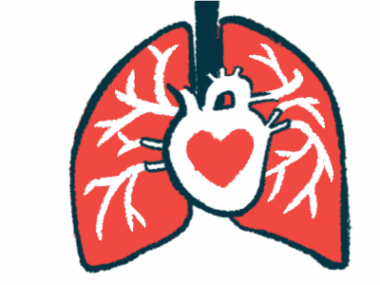Delay in AIP diagnosis resulted in severe disability in woman, 23
Case report seeks to raise awareness for early detection, diagnosis
Written by |

Researchers in Italy hope to help clinicians more quickly recognize acute intermittent porphyria (AIP) in their case report of a young woman who saw her condition severely worsen after years of delayed diagnosis.
The woman had a history of psychiatric issues and abdominal pain, and then developed neurological symptoms, which ultimately led to limb weakness, respiratory failure, and seizures. The presence of the “classic triad” of abdominal pain, neurological symptoms, and psychiatric abnormalities pointed doctors to the correct diagnosis.
“This case report aims to raise awareness among clinicians and facilitate early recognition and accurate diagnosis of this rare disease,” researchers wrote.
The report was published in the journal Frontiers in Neurology in an article, titled “A case report of acute intermittent porphyria leading to severe disability.”
AIP, the most common form of acute porphyria, is caused by mutations in the HMBS gene, which codes for an enzyme called porphobilinogen (PBG) deaminase. Deficiency of this enzyme results in the accumulation of porphyrins and other precursor molecules in tissues and organs, eventually reaching toxic levels and causing symptoms.
Woman, 23, had history of depression, irritability
In this report, researchers describe the case of a 23-year-old woman who was admitted to the hospital after a four-year history of depression and irritability, as well as weakness in her limbs for more than a week.
Over the years, she had experienced episodes of abdominal and back pain, accompanied by signs of panic attacks and difficulty sleeping. Despite being treated with antidepressants and antipsychotics, her symptoms persisted.
One week before her visit to the hospital, the woman developed weakness in her limbs that progressively led to her being confined to her bed. She also had difficulty swallowing, shortness of breath, and problems with urination.
At admission, a physical examination revealed she had experienced moderate growth and impaired nutrition. She was extremely thin and had cyanosis, or blueish skin due to low oxygen levels. A neurological examination showed she was unconscious and only opened her eyes in response to sudden, intense pain.
Additionally, the woman had reduced muscle tone and absent tendon reflexes in her extremities, along with absent baroreflexes, which are important to regulate blood pressure, and forward rounding of the upper back.
Her blood oxygen saturation was low and did not improve after oxygen therapy and sputum aspiration. Therefore, she needed to be intubated for ventilator-assisted breathing.
Brain MRI was highly suggestive of posterior reversible encephalopathy syndrome, a condition characterized by seizures and altered mental status. Moreover, she had nerve damage in the extremities, affecting both motor and sensory fibers.
Doctors suspected the woman had Guillain-Barré syndrome, an autoimmune condition in which the immune system attacks the peripheral nerves, and she was treated with human immunoglobulin (used in severe antibody deficiencies), medications to nourish the nerves, and antibiotics, among other therapies. However, her limb weakness did not ease significantly.
At that time, when considering the woman’s history of abdominal pain and psychiatric issues, and recent acute worsening of neurological symptoms, the researchers suspected she had AIP.
Diagnosis confirmed with PBG test, genetic assessment
The diagnosis was confirmed by a positive PBG test in urine when exposed to sunlight (it turns reddish-brown), and by genetic testing, which revealed she had an HMBS gene mutation, inherited from her mother.
Subsequent treatment included daily progesterone injections to delay menstruation. The patient was unable to be discharged after 32 days in the hospital, but her family requested an automatic discharge. At the time, she was coherent but mentally impaired, with normal comprehension and attention span. However, she still had low muscle strength and tone.
Ten days after discharge, she tolerated being weaned off the ventilator but still had weakness in the limbs. At three months of follow-up, she was on an intermittent high-sugar diet, and her limbs were stronger, making it possible to stand up independently. However, she was still emotionally irritable.
Although the “classic triad” of AIP symptoms — abdominal pain, neurological symptoms, and psychiatric issues — rarely occurs in the same patient, their presence should be considered a red flag for porphyria.
“We present a case with multiple typical clinical manifestations of AIP in the hope of aiding clinicians in fully recognizing acute intermittent porphyria,” the researchers wrote.







